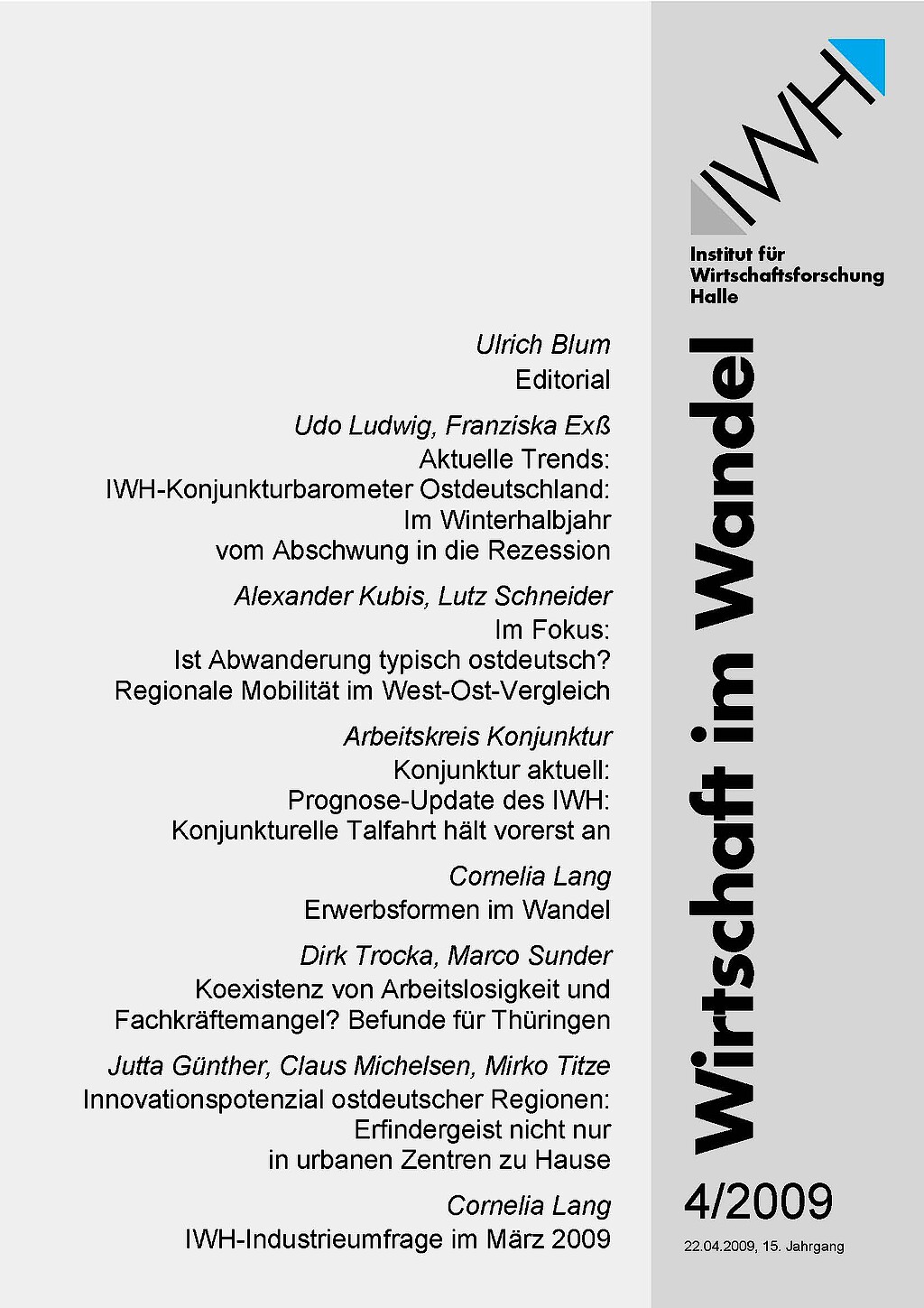
Co-existence of Unemployment and Skilled Labour Shortage? Evidence from Thuringia
Angesichts der günstigen konjunkturellen Entwicklung in den zurückliegenden Jahren haben Wirtschaftsverbände regelmäßig vor einem Mangel an Fachkräften gewarnt, der die Entwicklungsmöglichkeiten der Unternehmen einschränken könne. Berücksichtigt man, dass die Bevölkerung im erwerbsfähigen Alter künftig schrumpft, so könnte eine Knappheit an Fachkräften neben einem konjunkturell bedingten Phänomen zu einem dauerhaften Erscheinungsbild werden. In den Neuen Bundesländern schreitet der demographische Wandel besonders rasant voran. Doch noch immer herrscht dort hohe strukturelle Arbeitslosigkeit, welche die Existenz von Fachkräfteengpässen fragwürdig erscheinen lässt. In der Studie werden, mit einem regionalen Fokus auf Thüringen, zwei Aspekte untersucht. Zum einen wird betrachtet, inwiefern sich mögliche berufsgruppenspezifische Engpässe auf Bundesebene in Thüringen wiederfinden lassen. Hierfür werden auf Grundlage der Daten der amtlichen Statistik entsprechende Kriterien definiert. Insbesondere für einige Metall- und technische Berufe zeigt sich eine hohe Auslastung der Fachkräftebasis in Deutschland. Schon jetzt trifft das in der Mehr-zahl dieser Berufe auch für Thüringen zu. Hohe Arbeitslosigkeit und Fachkräfteengpässe können demnach – zumindest in einer Übergangsphase – koexistieren. Zum anderen wird betrachtet, ob unternehmensseitig in der näheren Zukunft Probleme bei der Suche nach Fachkräften erwartet werden. Hierzu hat das IWH eine Befragung unter rund 1 000 Unternehmen in Thüringen durchgeführt. Immerhin 61% der befragten Unternehmen rechneten mit derartigen Problemen, wobei sich statistisch bedeutsame Unterschiede hinsichtlich Unternehmenscharakteristika nachweisen lassen. Darüber hinaus werden im Beitrag ausgewählte Maßnahmen diskutiert, die von den Unternehmen im Zusammenhang mit den erwarteten Problemen implementiert werden.




